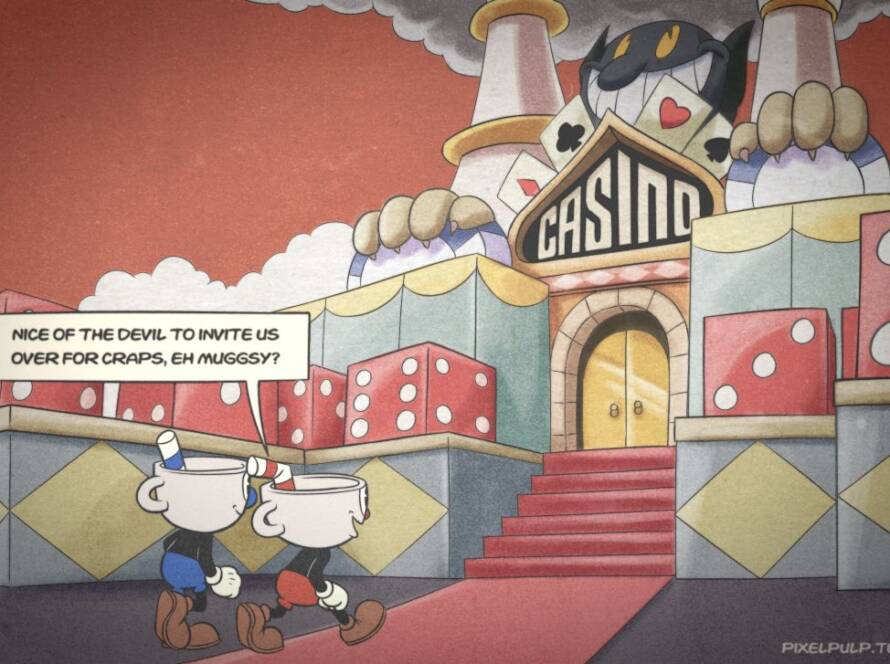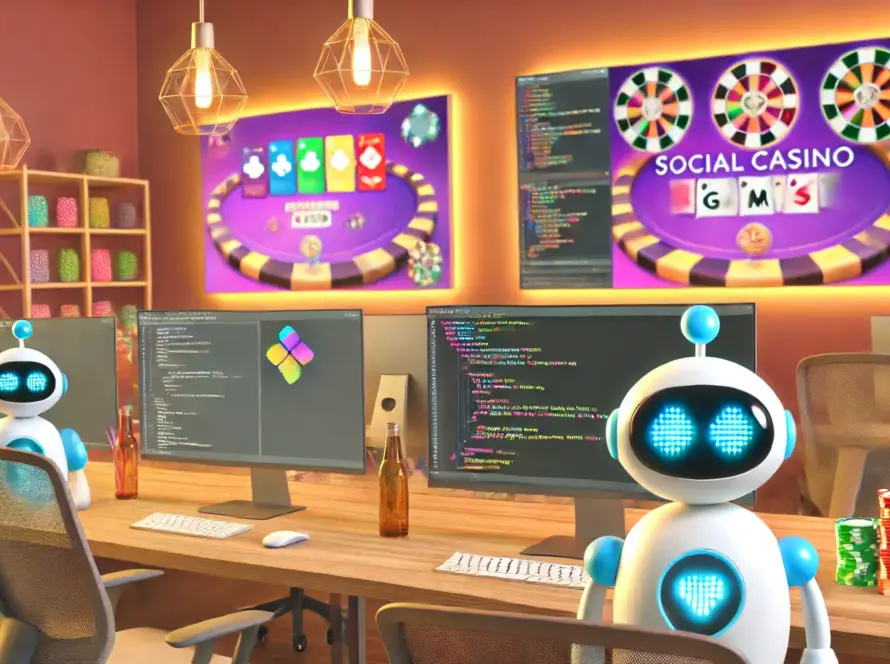Happy New Year! Cannot believe it is already 2023 and we are officially in the future! The AI future it is, and we’re really here for it. It has our heads turning in studio and we cannot wait for how this will change our product, and the future of social casino dynamic virtual worlds interactions.
Quick recap – we all know that in November 2022, the introduction of ChatGPT made headlines worldwide, quickly becoming a transformative force in how AI-powered conversations are conducted. Its impact was immediate and far-reaching, signaling a new era of intelligent interactions. For anyone in tech, AI is all the rage. At Lucky Lady Games, we saw this as more than just a breakthrough in technology—we knew it was the future of gaming, specifically for non-player characters (NPCs).
For years, NPCs in games have been limited to static, scripted dialogues, unable to truly engage players beyond preset lines. But with the rise of natural language processing and real-time AI systems like ChatGPT, the potential to revolutionize NPCs was clear. We realized this technology could give NPCs the ability to dynamically respond to players, adapt based on behavior, and provide personalized, evolving interactions—especially within immersive environments like our Dreamlands virtual world.
We decided to push the boundaries by experimenting with these AI-powered NPCs in a procedurally generated virtual casino setting, where players could interact with characters that remembered their past choices and offered smarter responses. Our mission? To build an AI system that could scale across multiple platforms—from PC to mobile—while managing real-time conversations without compromising performance or breaking the bank with high-cost generative AI solutions. Here’s why we took on this challenge and the insights we gained on our journey to redefine NPCs for the future of gaming.
AI-Powered NPC Systems in Dreamlands Virtual World
In Dreamlands, we set out to create AI-powered NPCs that could adapt to player actions in real-time, offering a more dynamic, personalized gaming experience. These NPCs populate the procedurally generated social casinos within the virtual world, interacting with players in ways that go beyond the static, pre-scripted behaviors typically seen in games. However, building these systems presented unique challenges—especially when it came to balancing real-time responsiveness, scaling across platforms, and managing the costs of generative AI.
Key AI-Powered NPC Elements in Dreamlands – Design thinking & vision:
- NPC Dynamic Learning & Real-Time Responsiveness: We wanted our NPCs to adjust their behavior based on how players interact with them, creating an immersive, evolving experience. In Dreamlands’ virtual social casinos, this means NPCs can guide players, interact with them at games, and provide personalized responses based on actions and decisions.
The Challenge: Maintaining real-time responsiveness for these NPCs across platforms like PC, mobile, and web was tough, particularly in a procedurally generated world where player interactions vary. NPCs had to react quickly, whether they were offering advice on high-stakes bets or guiding players through in-game events.
Possible Approach: AI models that learn from player data, such as risk tolerance or betting habits, and offer responses that align with the player’s style. For example, if a player is more aggressive in their bets, the NPC might encourage riskier decisions.

- For the MVP, simplified AI interactions that limited NPC adaptability to key variables, like risk-taking behavior or betting patterns. This allowed keeping performance high and complexity low while still providing dynamic, personalized interactions. Full-scale learning capabilities, such as long-term memory of player interactions, can be introduced in future versions.
- Generative AI for NPC Conversations: One of the most exciting possibilities was to use generative AI for NPC conversations, making interactions feel more natural and personalized. Imagine a casino host NPC that remembers your favorite games and tailors conversations to your playstyle—this is the kind of immersion we aimed for.
The Challenge: While generative AI models can create fluid, personalized dialogue, they come with high computational and financial costs, especially when scaled to support hundreds or thousands of players simultaneously. Real-time chat or conversation generation becomes expensive and difficult to manage across a large multiplayer environment.
Possible Approach: For the MVP, limit the use of generative AI to key NPCs and special events, where personalized interactions would have the most impact. For general interactions, use scripted dialogue that could be dynamically adjusted using AI, offering a cost-effective balance between immersion and scalability. - Avatar Customization & NPC Interaction: We wanted NPCs in Dreamlands to recognize and respond to player avatar customization, adding another layer of immersion. Platforms like ReadyPlayerMe allow players to bring their personalized avatars into the game, and we aimed for NPCs to react to these avatars in meaningful ways, such as complimenting outfits or recognizing special gear.
The Challenge: Integrating these customized avatars and making sure NPCs reacted appropriately across platforms was a technical hurdle. Additionally, the high cost of rendering and processing detailed avatars in real-time presented a performance challenge.
Possible Approach: A minimal viable product (MVP) approach, where NPCs could react to key visual attributes of the player’s avatar, such as outfit changes or casino-specific gear, without overloading the system. This approach could maintain performance while still providing immersive interactions. In future updates, we plan to enhance NPC recognition with more complex avatar interactions as performance optimizations allow. - Procedurally Generated World & NPC Placement: The world of Dreamlands is procedurally generated, meaning each time a player enters a new area, the layout of the social casino is different. NPCs needed to be placed intelligently within these spaces, adapting to player behaviors and the casino layout .
The Challenge: Ensuring that NPC placement and behaviors were appropriate within the procedurally generated spaces was tricky. NPCs had to be contextually relevant to their surroundings, without slowing down gameplay or overloading the system with too many dynamic elements.
Possible Approach: location-based approach, where NPCs were tied to high-traffic areas or key activities in the game, such as high-stakes tables or event spaces. This could reduce the complexity of scattering NPCs randomly and helped maintain smooth performance by minimizing unnecessary NPC interactions in less active zones.

What We Learned from AI-Powered NPCs in Dreamlands:
For the MVP, we focused on simplified AI models, using generative AI selectively and optimizing NPC placement to maintain smooth gameplay. As we continue to evolve and grow Dreamlands Social Casino virtual world, our goal is to scale these AI systems with more advanced learning and real-time capabilities, while continuing to balance cost and performance in a procedurally generated world.
Do you like posts and shares like this? Stay tuned for more Lucky Lady Games Studio updates as we refine these AI-powered NPCs and bring even more dynamic interactions to the Dreamlands virtual social casino world!


